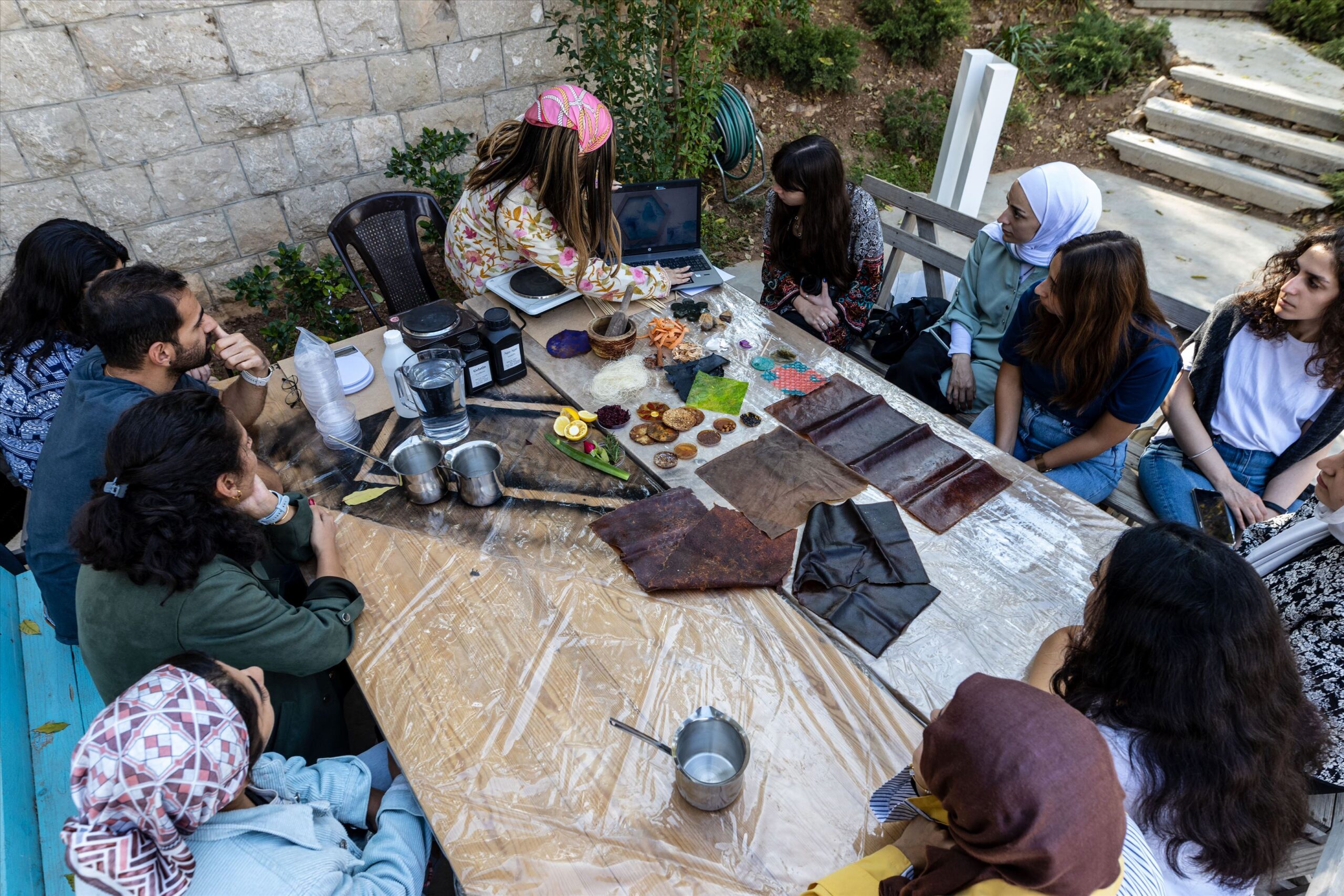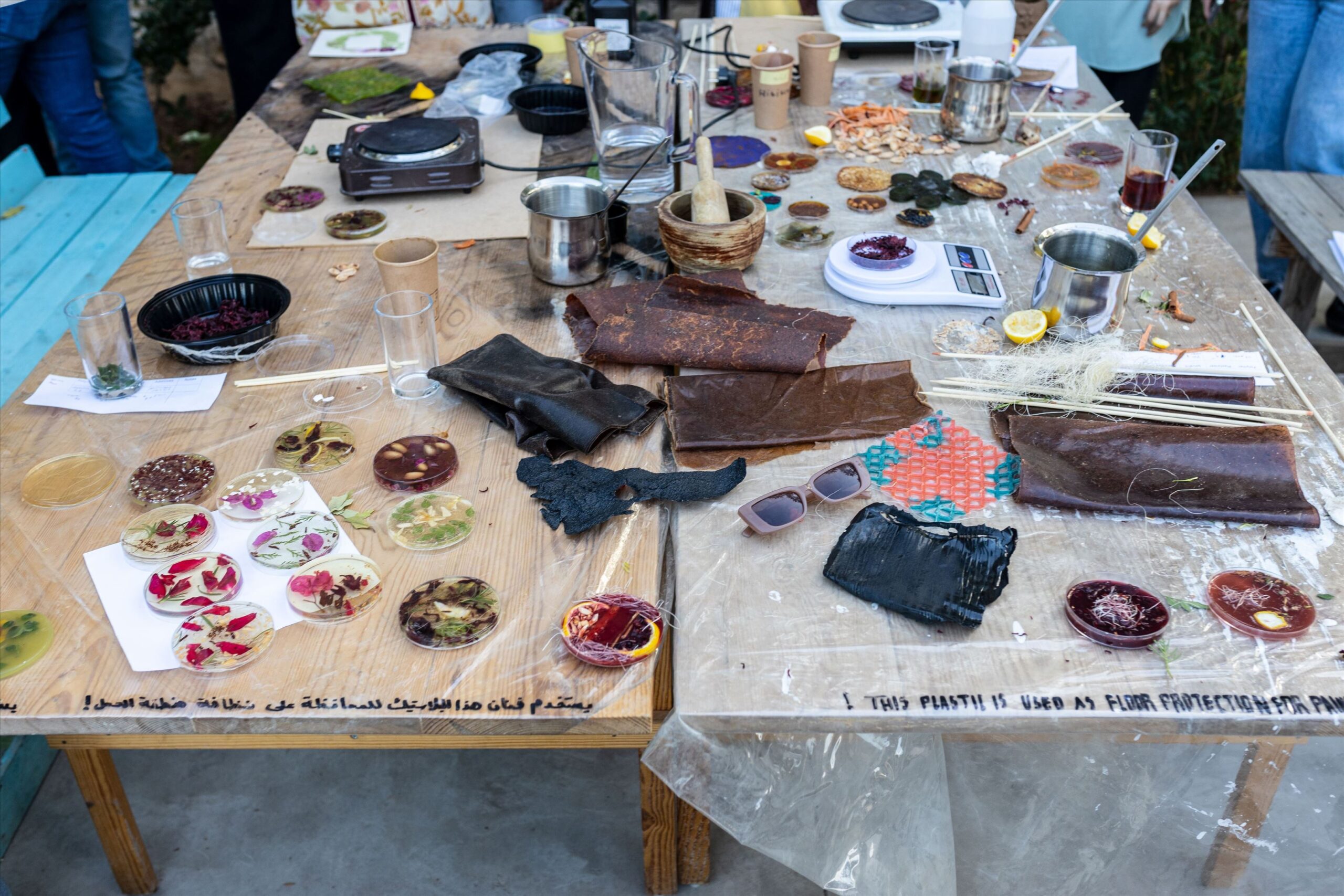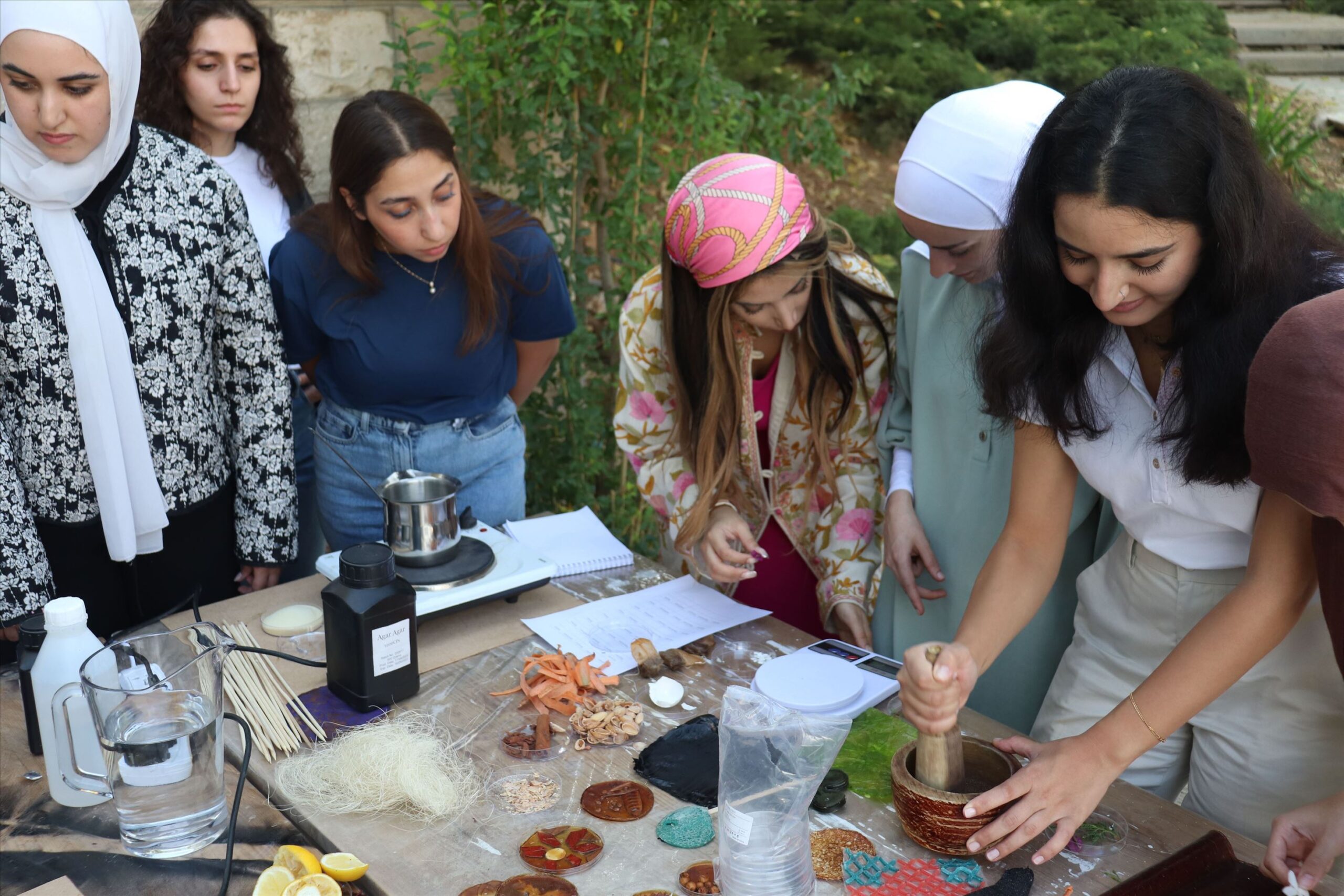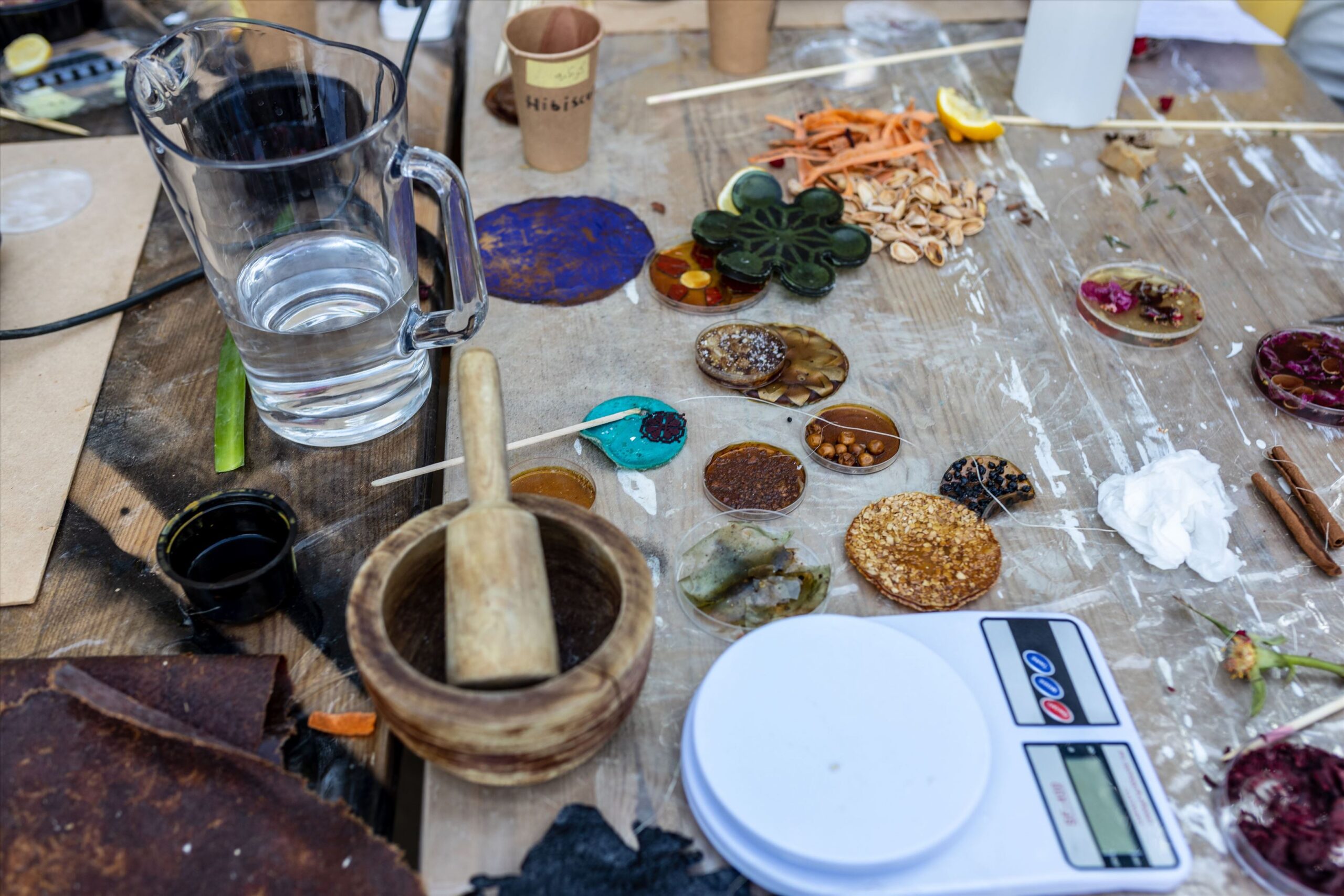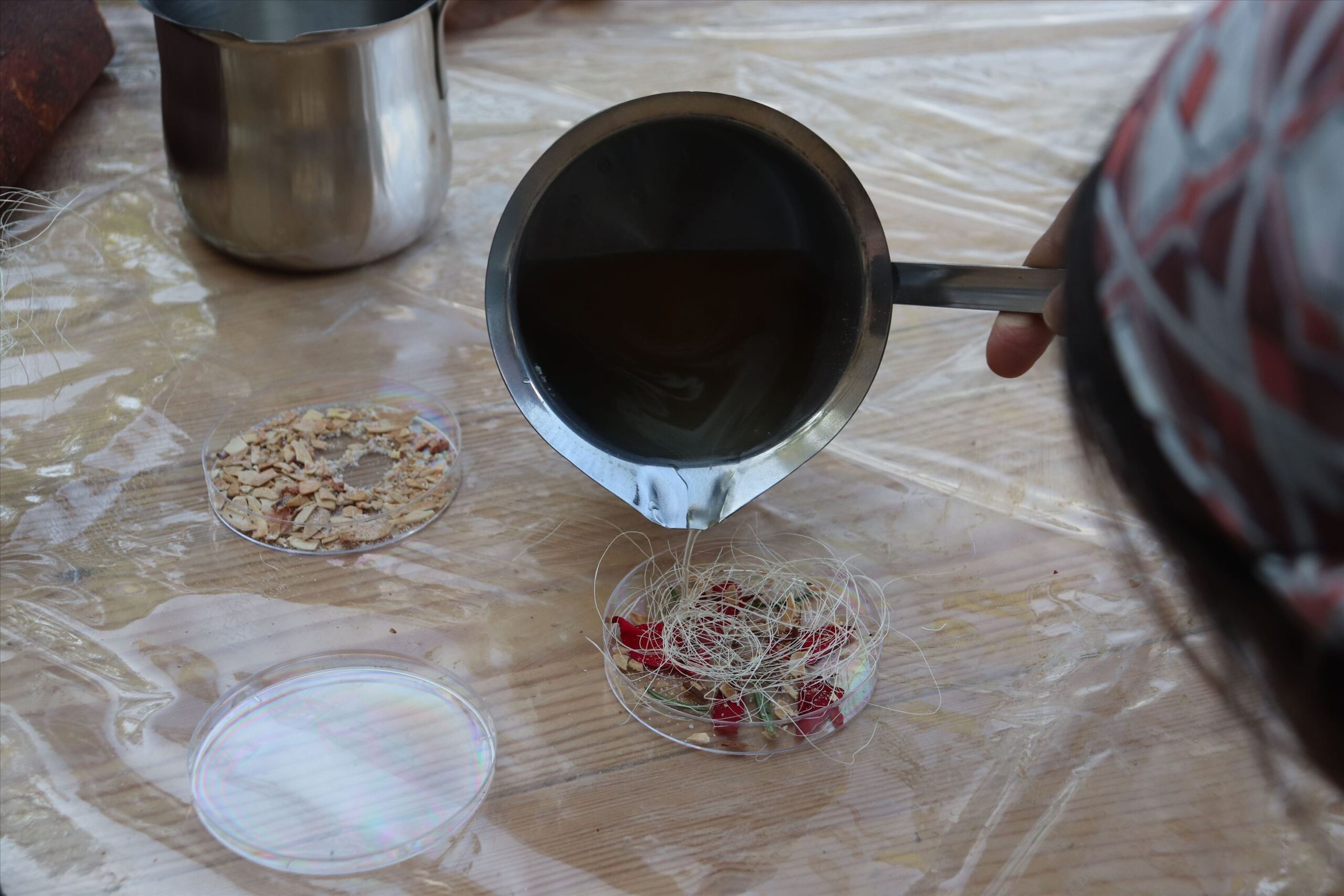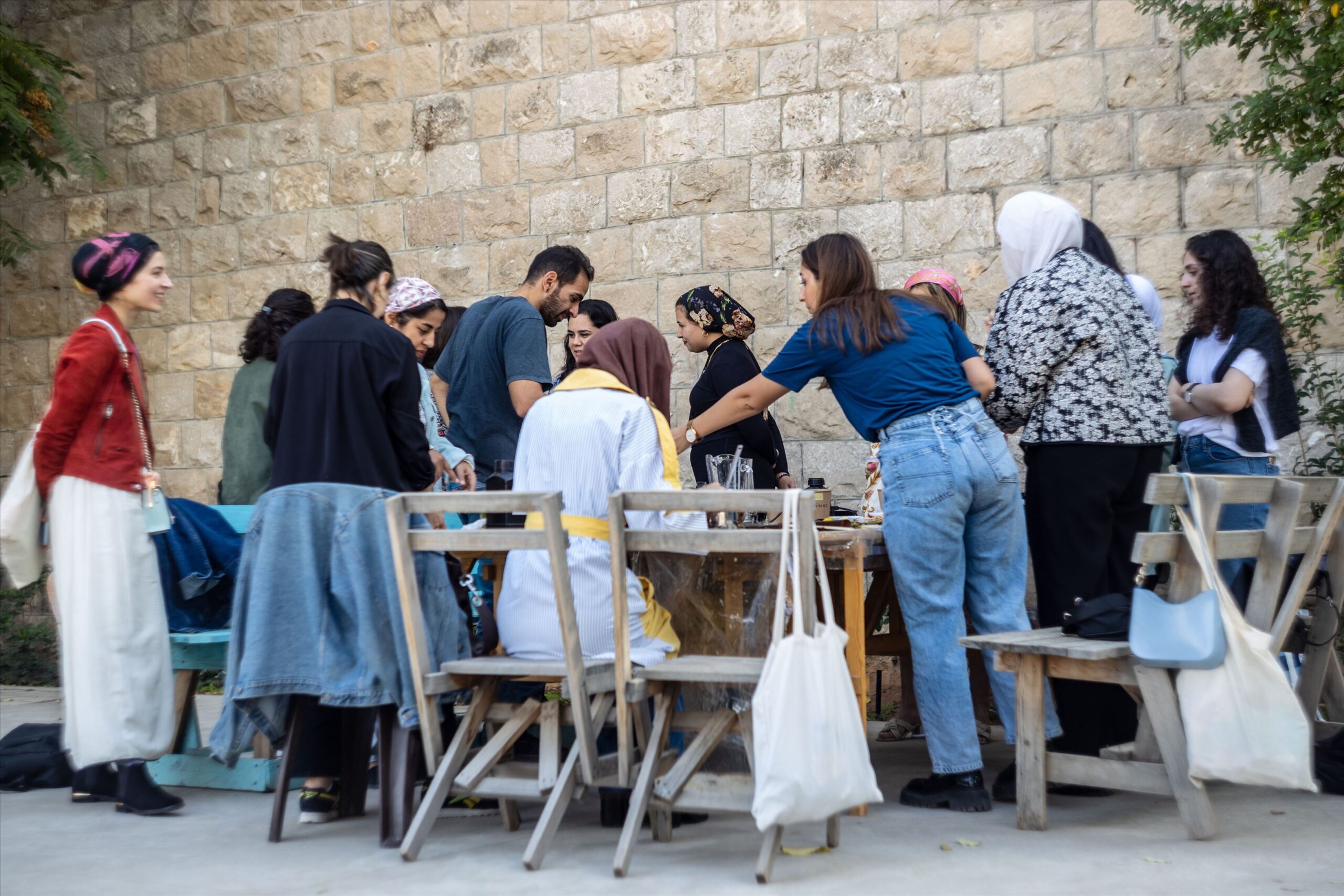التصنيع الحيوي
Bio Fabrication
Batoul Al Rashdan | بتول الرشدان
تصوير جورج الخوري
Photographs by George Al Khouri
عن التقنية
ينتج العالم ضعف كمية النفايات البلاستيكية التي كانت تنتج منذ عقدين من الزمن، وينتهي الجزء الأكبر منها في مكب النفايات أو بحرقها أو تسربها إلى البيئة، ويتم إعادة تدوير 9٪ فقط بنجاح وفق تقرير جديد لمنظمة التعاون والتنمية في الميدان الاقتصادي. هذا يرجع إلى حقيقة أن الناس كانوا يصنعون، ويصممون، ويصنعون المواد بشكل منفصل عن استخدامها في المستقبل. وقد تسبب هذا في حدوث عيوب كبيرة في التصميم في حياتنا اليومية، حيث نجد أنفسنا محاطين بالبلاستيك، مع ملاحظة اختفاء المعرفة حول المواد والتقنيات المحلية وتركها غير مستخدمة حتى عندما تكون متوافرة بكثرة. تركز ورشة العمل هذه على استكشاف مواد بديلة للموجودة حالياً. وتفضل العمل على تصنيع مواد بلاستيكية حيوية من نفايات الطعام من أجل تحسين عملية تقليل النفايات
عن الفنانة
بتول عمر الرشدان هي مهندسة معمارية ومصممة تقنية (High-tech) حائزة على عدة جوائز. كنتيجة لاهتمامها بدمج التكنولوجيا والعلوم والتصميم تقوم بتول باتباع منهجيات تصميم جديدة لتبني مشاريع تتعلق عادةً بالأفراد مباشرة. من خلال نقاط الاستشعار في أجسادهم، أو النقاط المتجذرة في أصولهم الثقافية، أو تسليط الضوء على الاهتمامات البيئية من أراضيهم والأماكن التي يعيشون فيها، تتكون مشاريع فريدة لسرد القصص باستخدام عمليات التصميم الحسابية المتطورة وأدوات التصنيع الرقمية
المواد المطلوبة
أواني
أطباق بتري
أكواب للخلط
أعواد خشبية أو ملاعق
مصدر حرارة / موقد، ميزان
٢٥٠ جرام أغرة
٥٠٠ جرام جيلاتين
١٠٠٠ جرام جلسرين
٢٠٠٠ مل ماء، نفايات طعام / إضافات (نفايات الطعام: قشور البرتقال، بقايا القهوة، قشر البيض، بقايا البطيخ، التمر، قشور الليمون، أوراق النباتات، بتلات الزهور..)
الخطوات
١. يسخن الماء في قدر على الموقد
٢. تضاف إليه المادة الملدنة
٣. يضاف الاجار / الجيلاتين
٤. تخلط حتى تصبح تتماسك وتصبح ناعمة
٥. يطبخ الخليط لمدة 30 دقيقة
٦.تصب داخل أطباق بتري
٧. يترك يجف في غرفة جافة
٨. يتم إزالة العفن عندما يجف الخليط تماما
About technique
The world is producing twice as much plastic waste as two decades ago, with the bulk of it ending up in landfill, incinerated or leaking into the environment, and only 9% successfully recycled, according to a new OECD report. This is due to the fact that people had been crafting, designing, and making materials independently from their future use. This has caused major design flaws in our daily lives, where we find ourselves surrounded by plastics, while observing knowledge about local materials and techniques disappear and be left unused even when in abundance. This workshop focused on exploring material alternatives to the current ones. Personally prefer creating Bioplastics from food waste in order to optimize waste reduction.
About the artist
Batoul Omar AL-Rashdan is an award-winning architectural engineer and Hi-Tech designer. She had always been interested in merging technology, science & design. As a result, she likes approaching new design methodologies and creating projects usually related to the people either directly through sensors on their bodies or being rooted in their cultural foundation or highlighting environmental concerns from their land and places they live at, in unique storytelling projects utilizing cutting edge computational design processes and digital fabrication tools.
Material needed
- 250 g Agar agar
- 500g Gelatine
- 1000 g Glycerine
- 2000 ml water, food waste/additives (food waste: orange peels, coffee leftovers, egg shells, pine, watermelon leftovers, dates, lemon peels, leaves, flowers petals,… )
- Pots
- Petri dishes
- Cups for mixing
- Wooden sticks or spoons
- Heat source/stove
- Scale
Steps & instructions
- Warm up the water in the pot on stove
- Add plasticiser
- Add the agar/gelatine
- Mix until smooth
- Simmer for another 30 minutes
- Pour inside Petri dishes
- Let it dry in a dry room
- De-mould when completely dry
